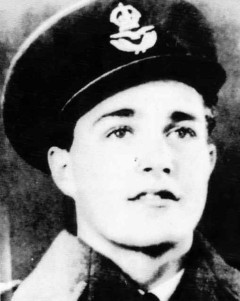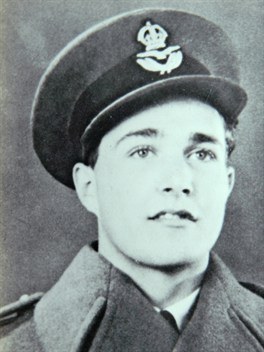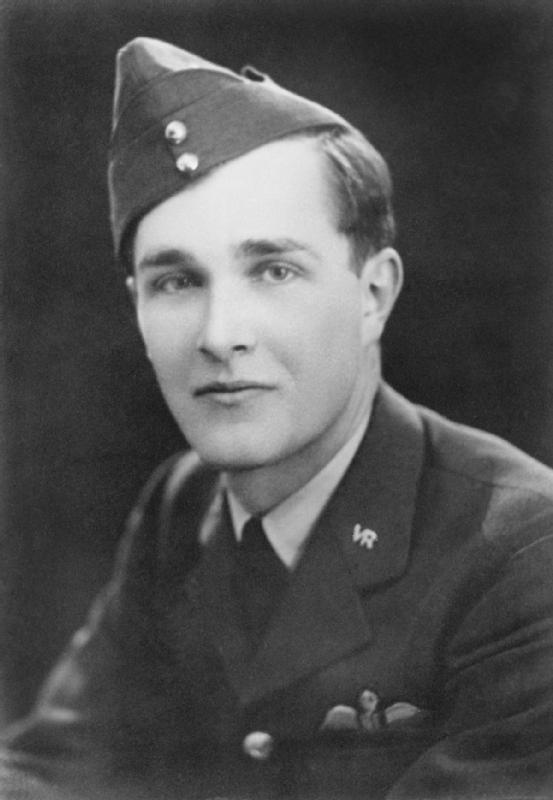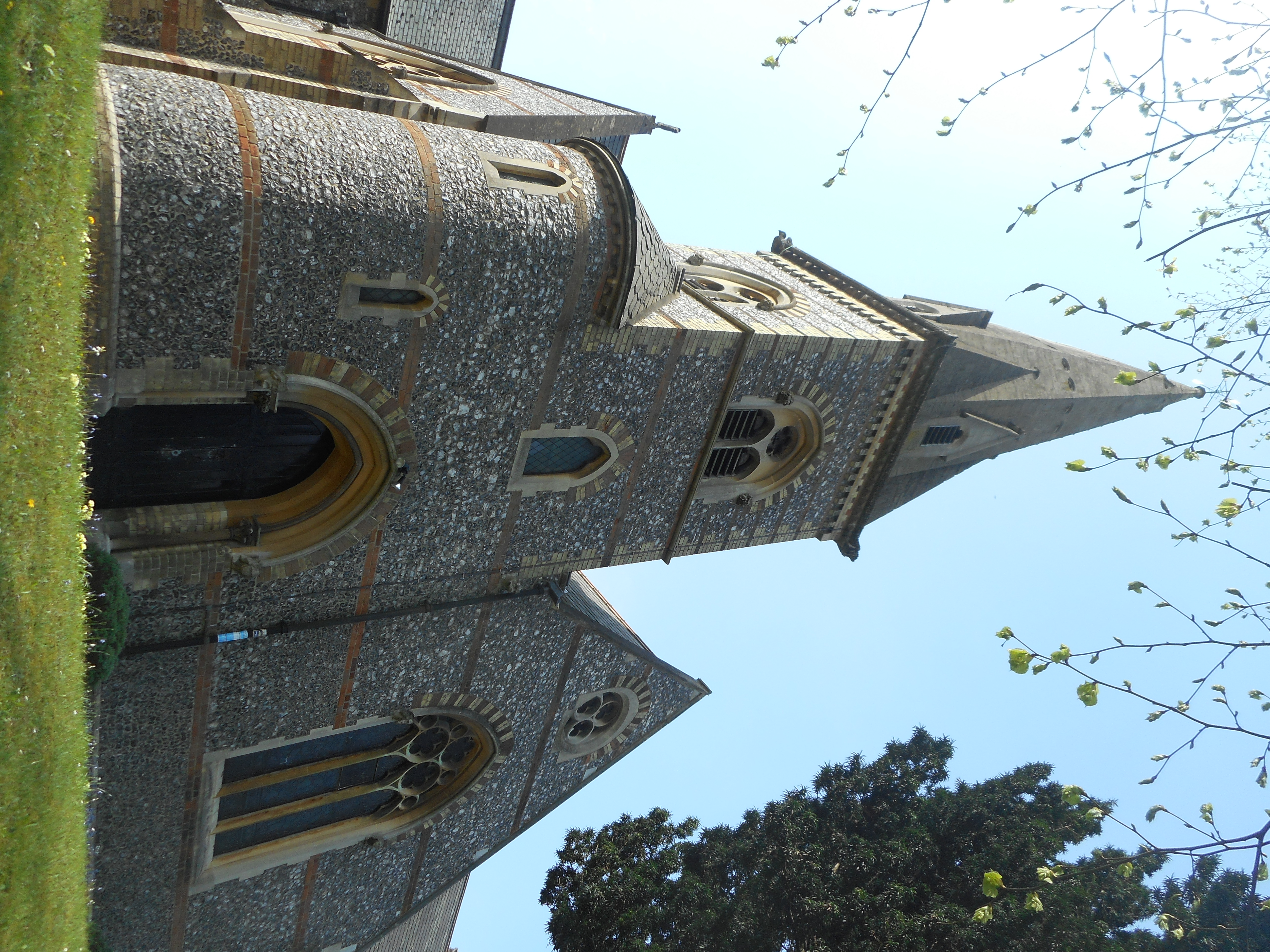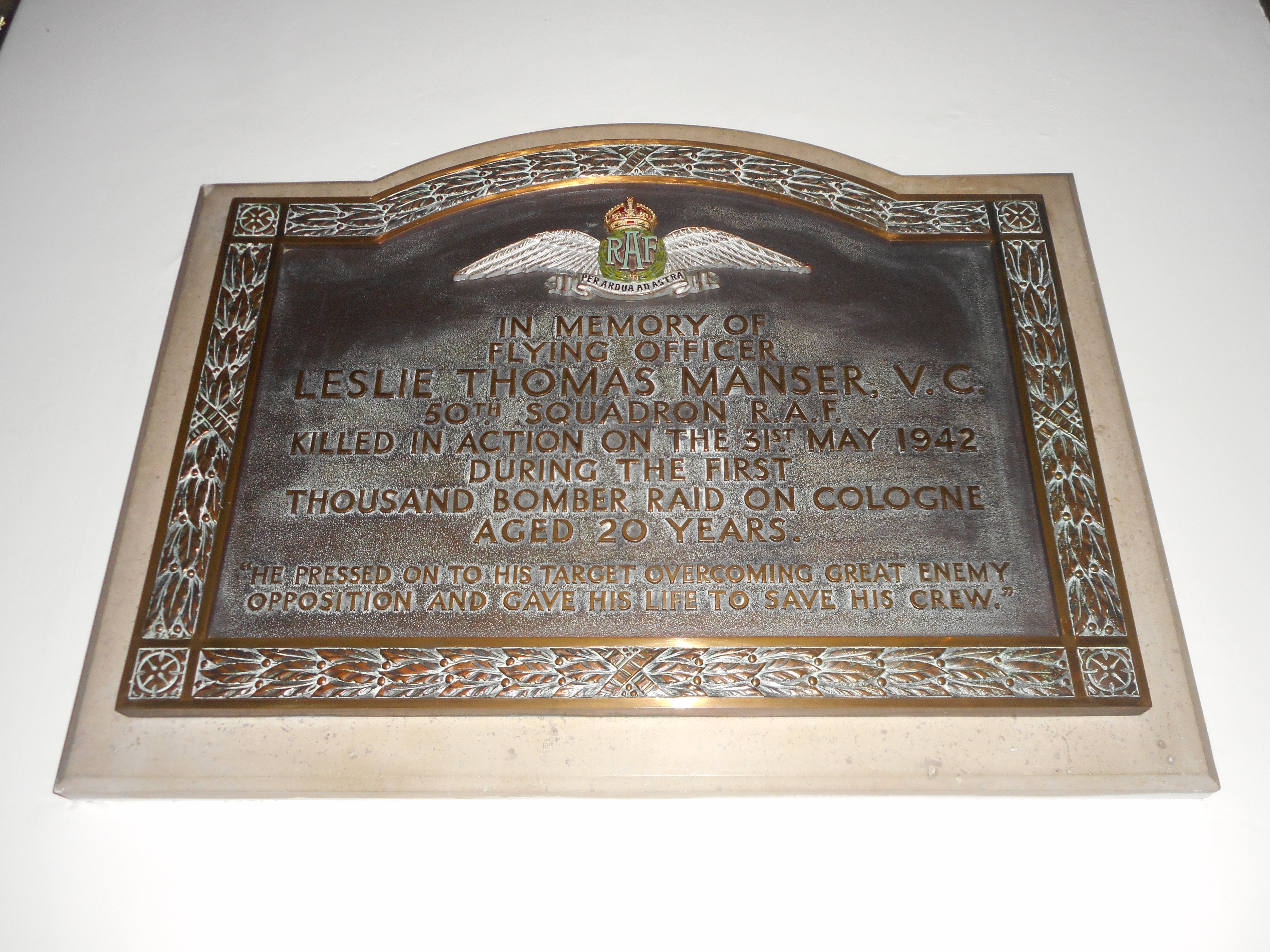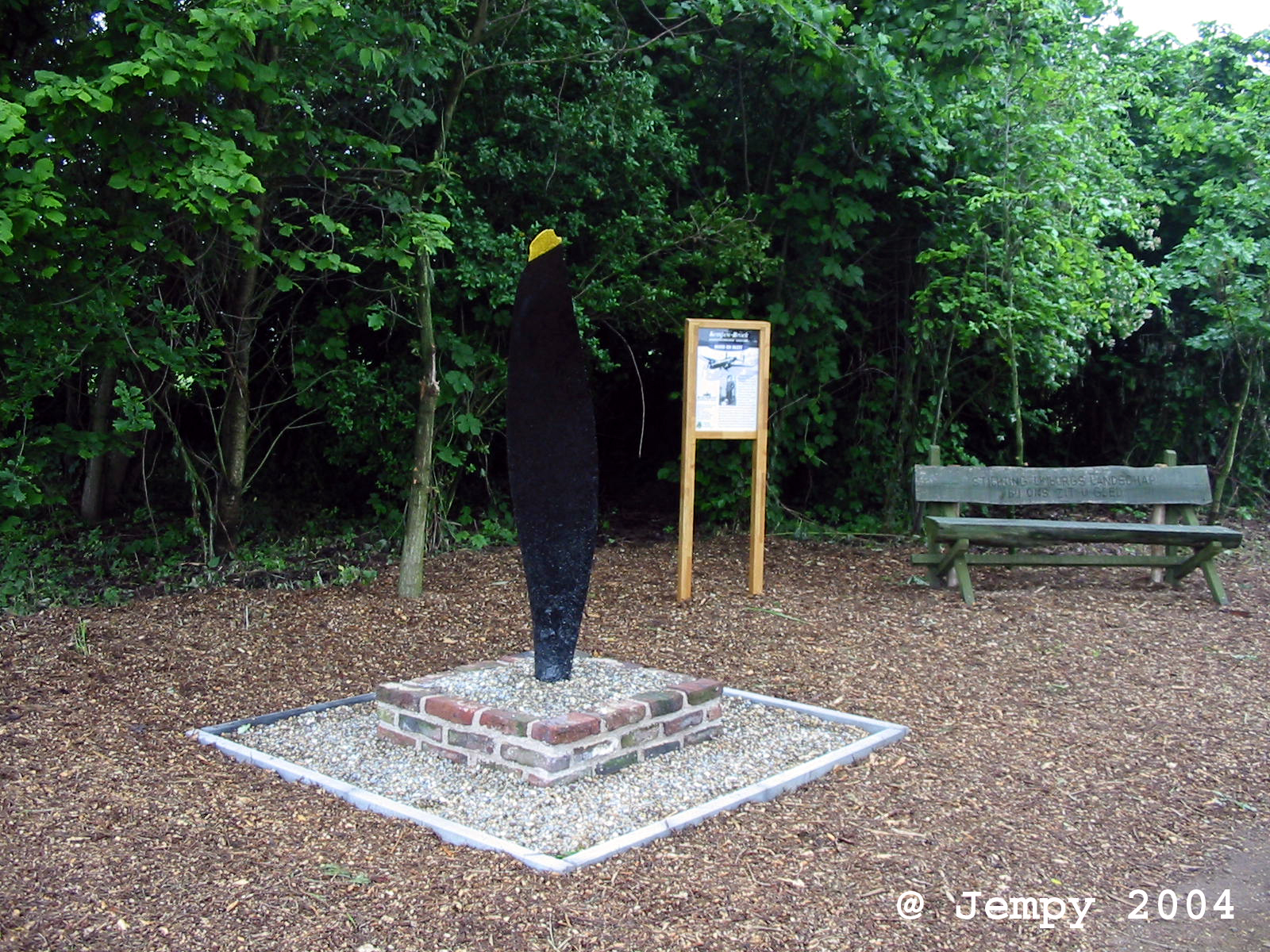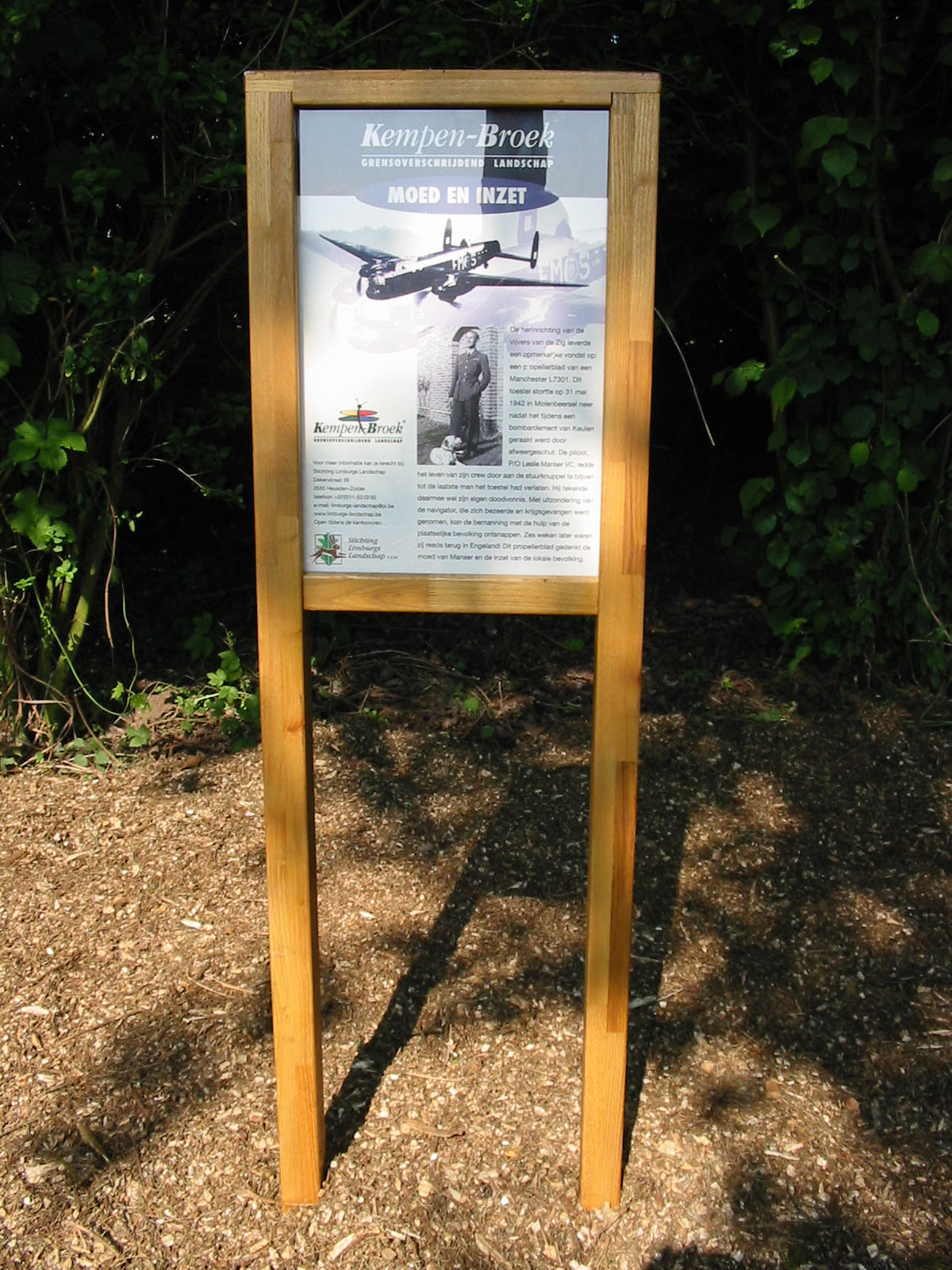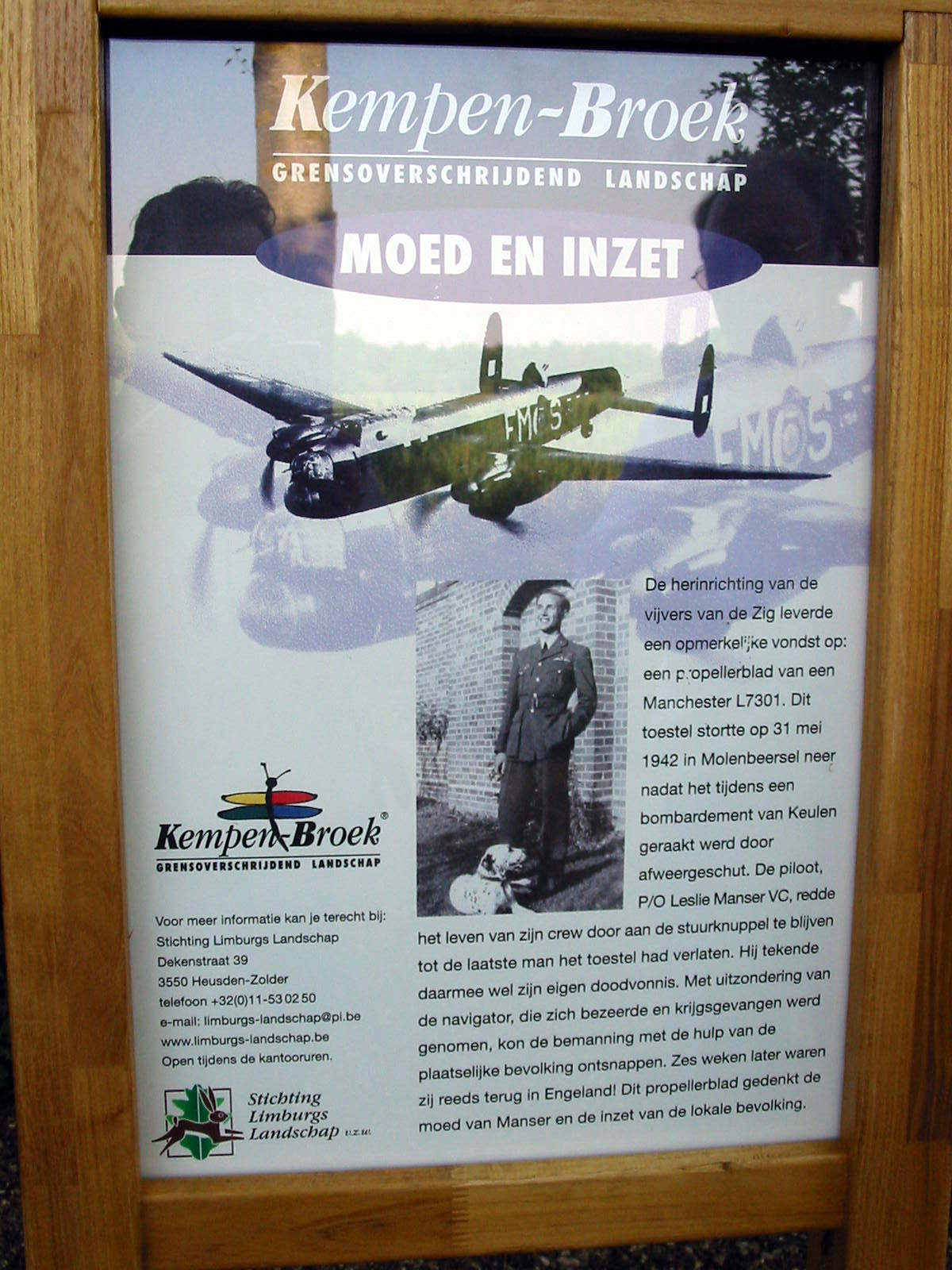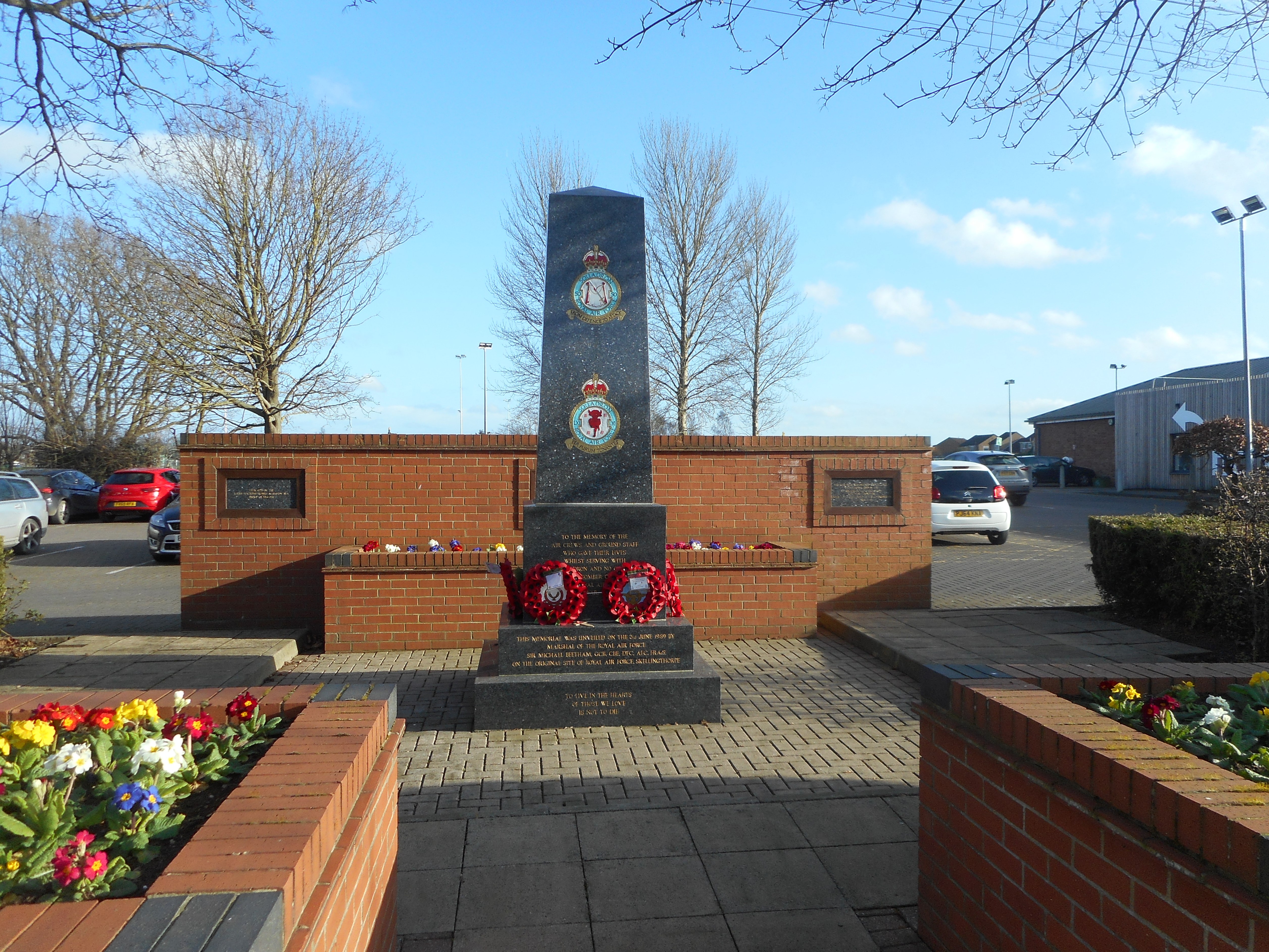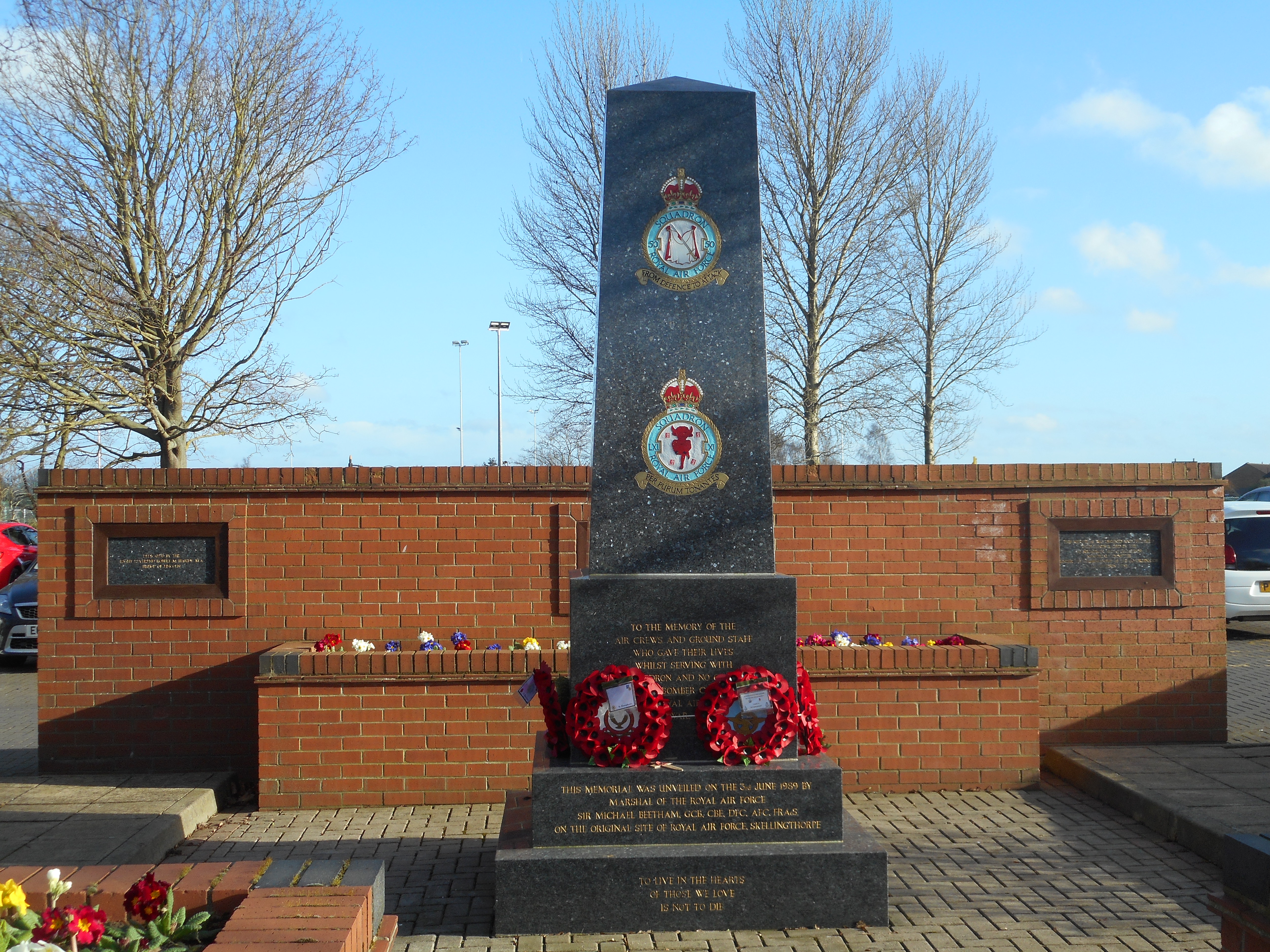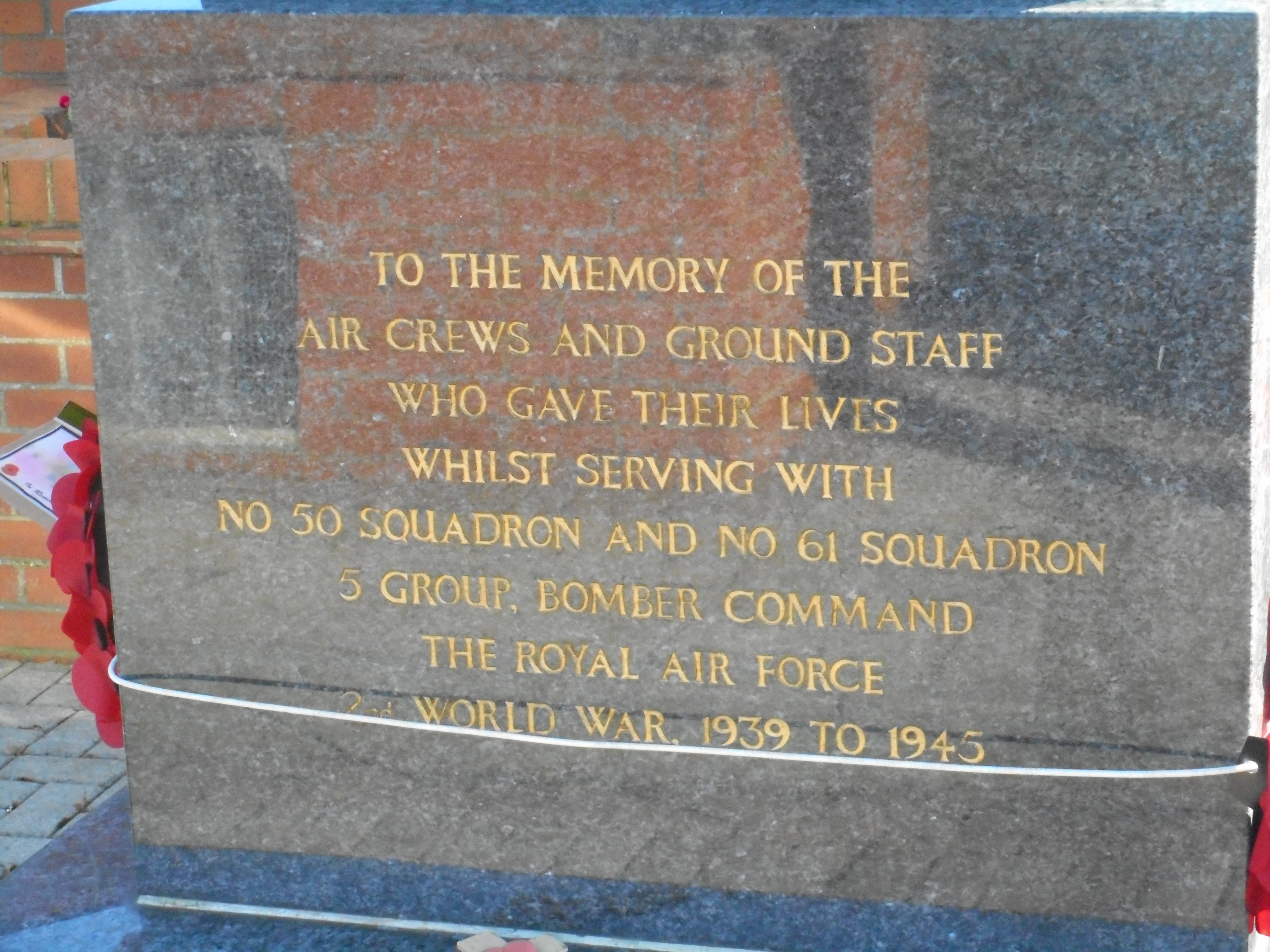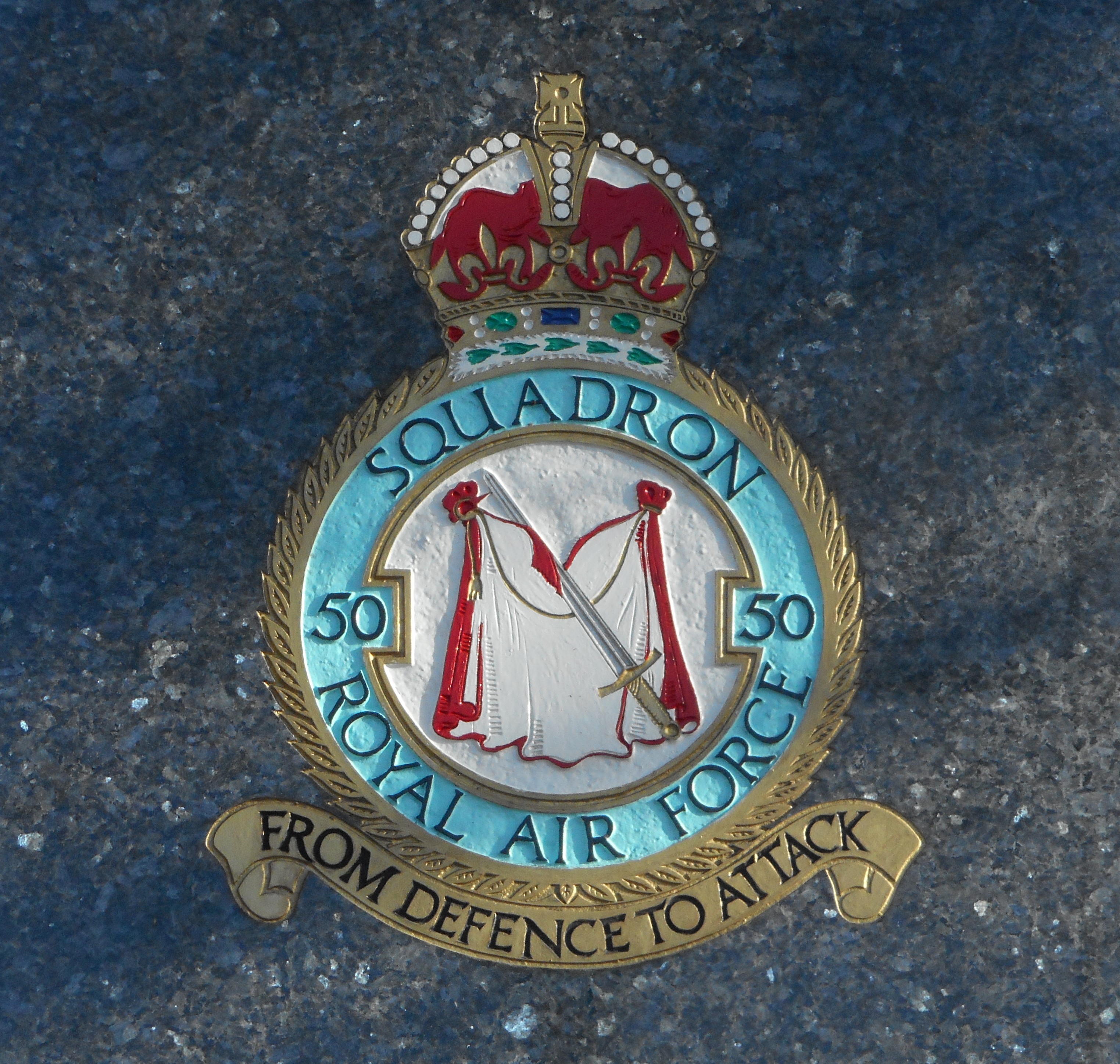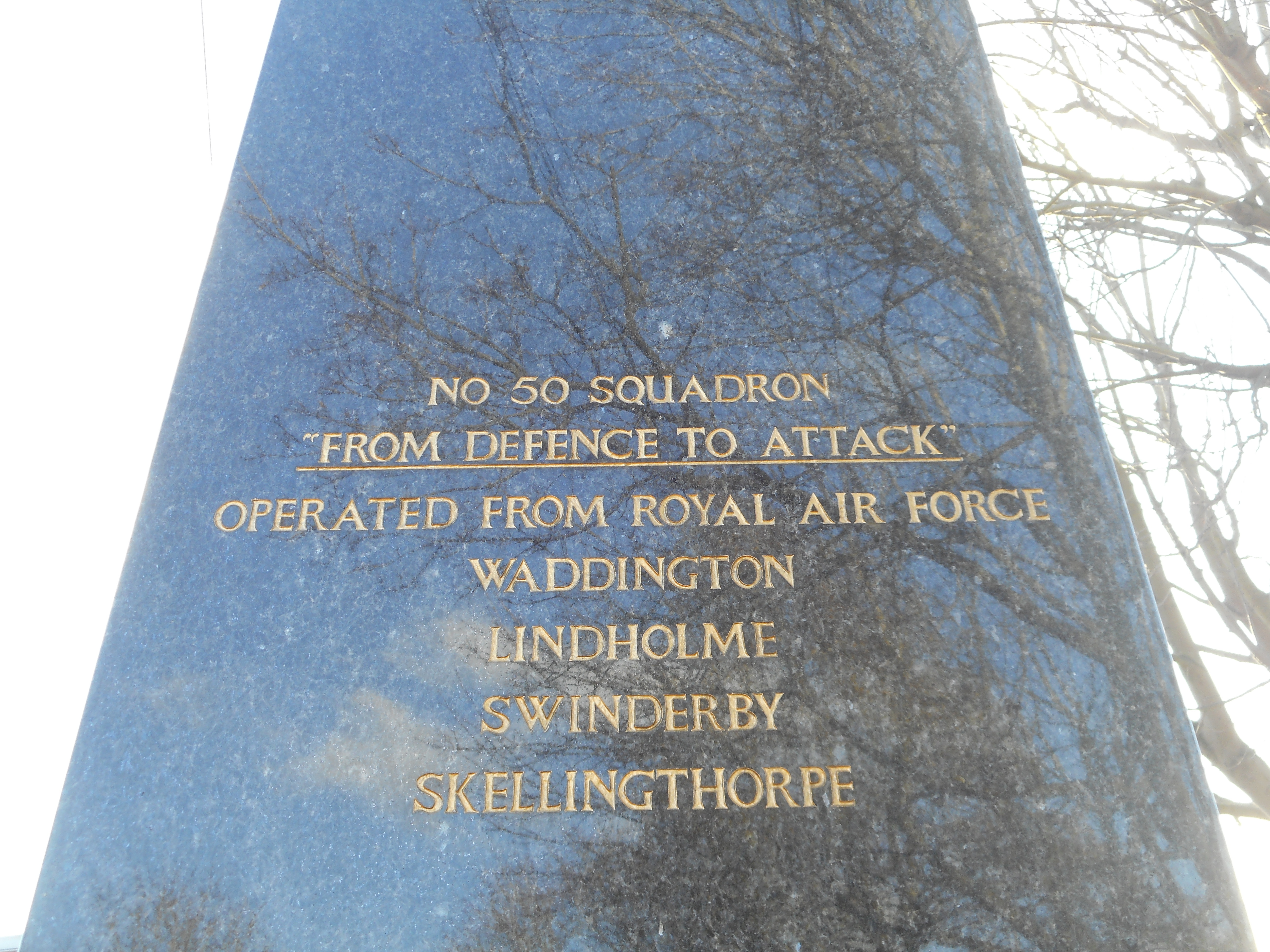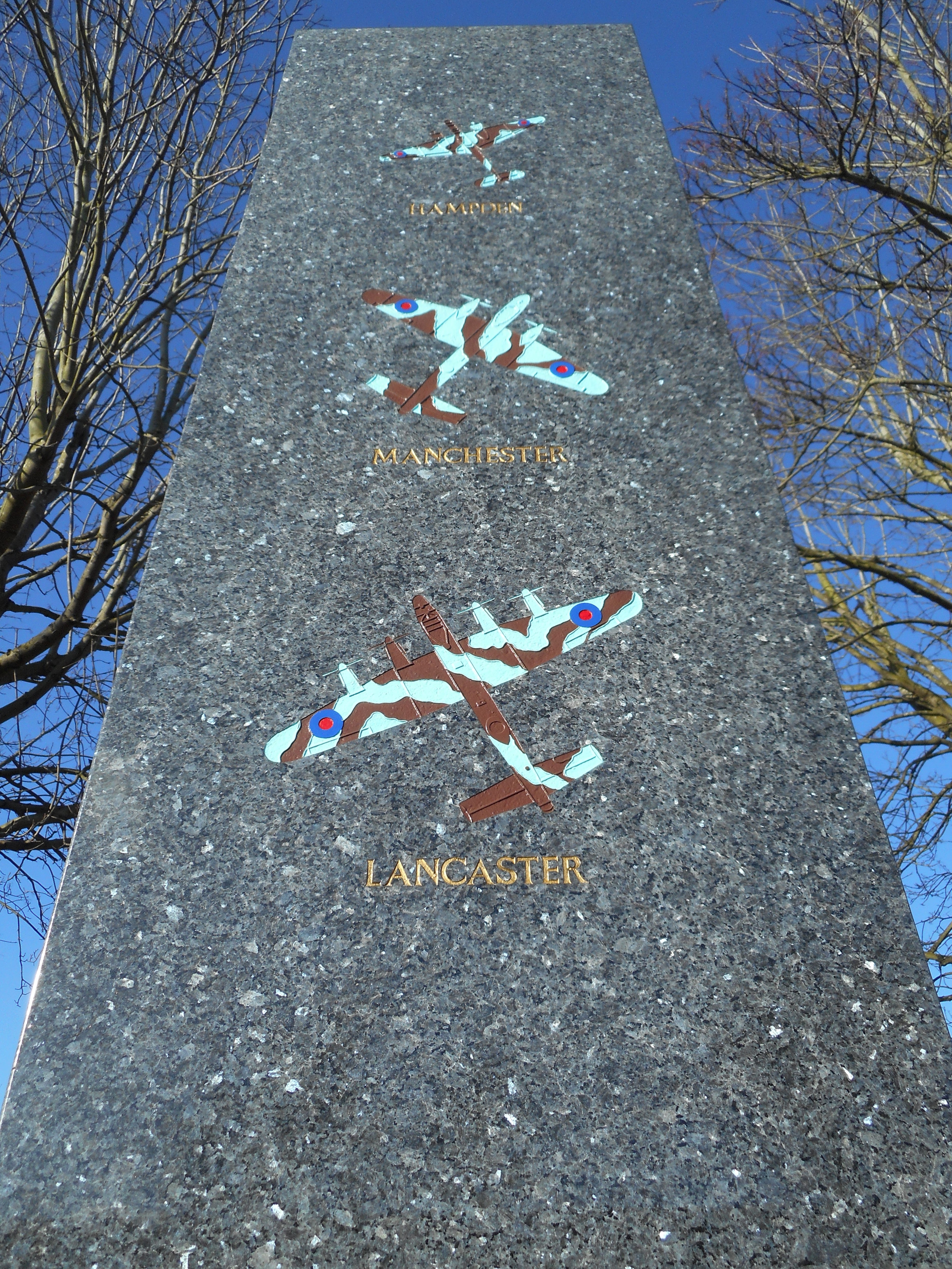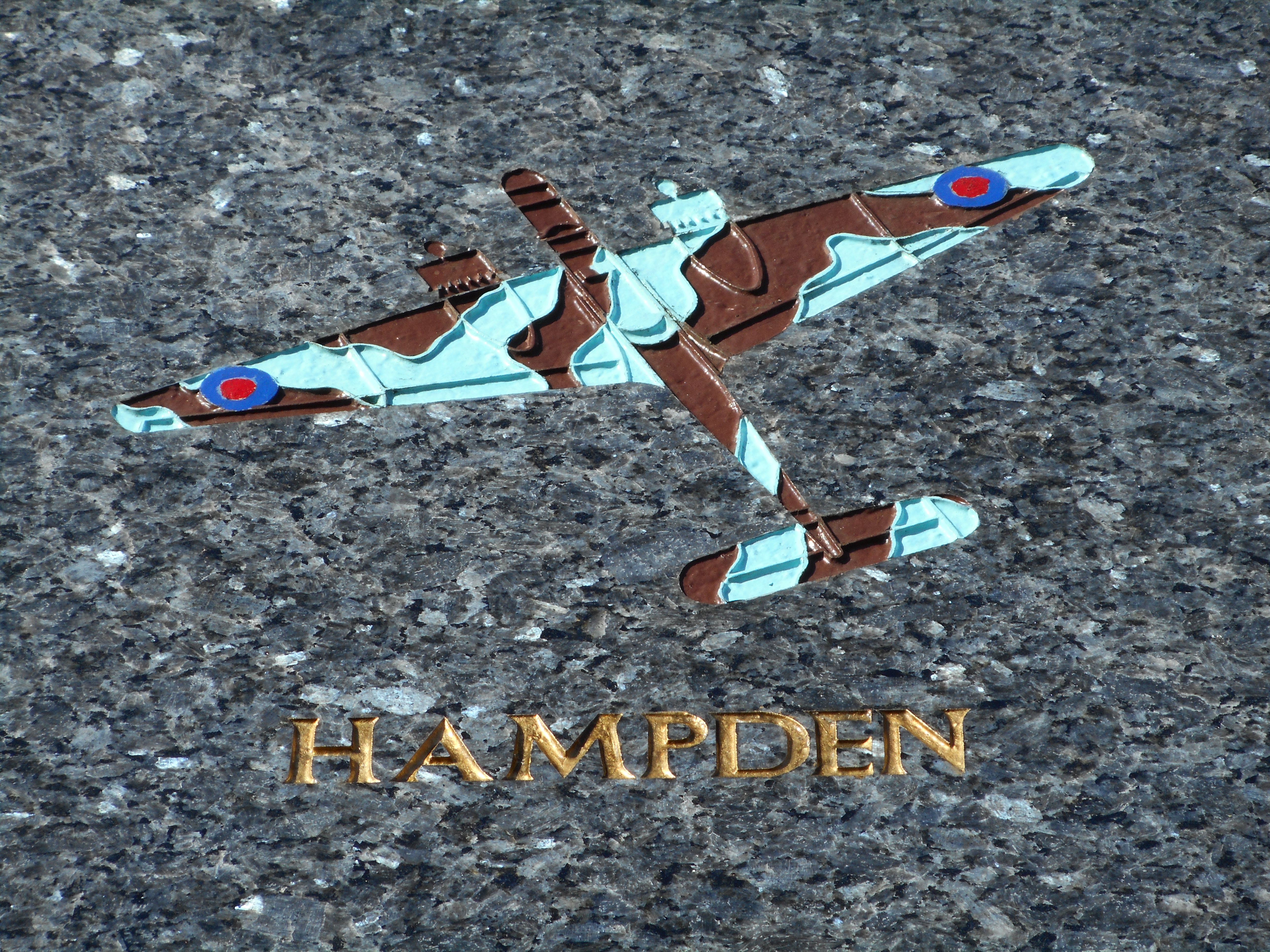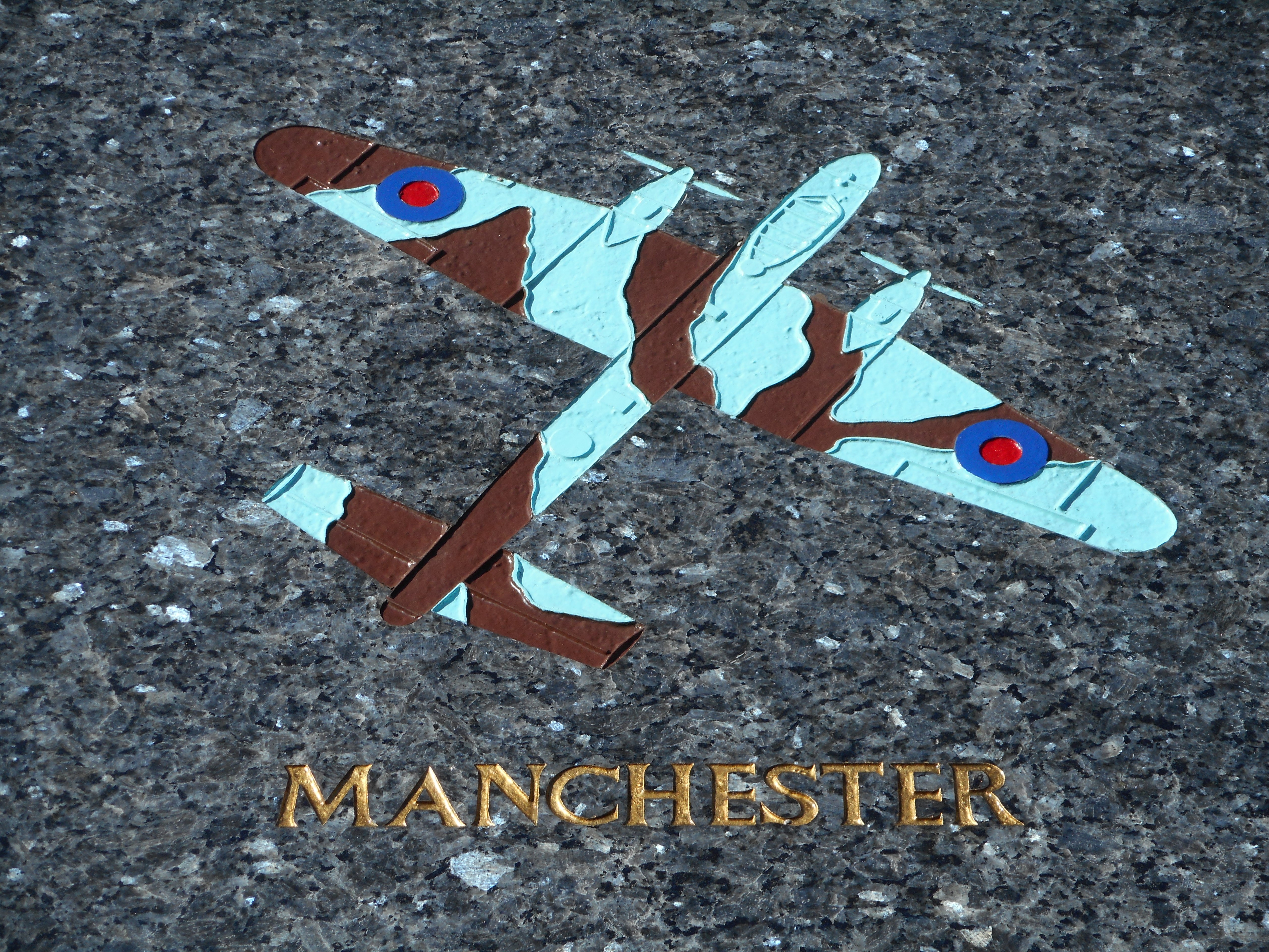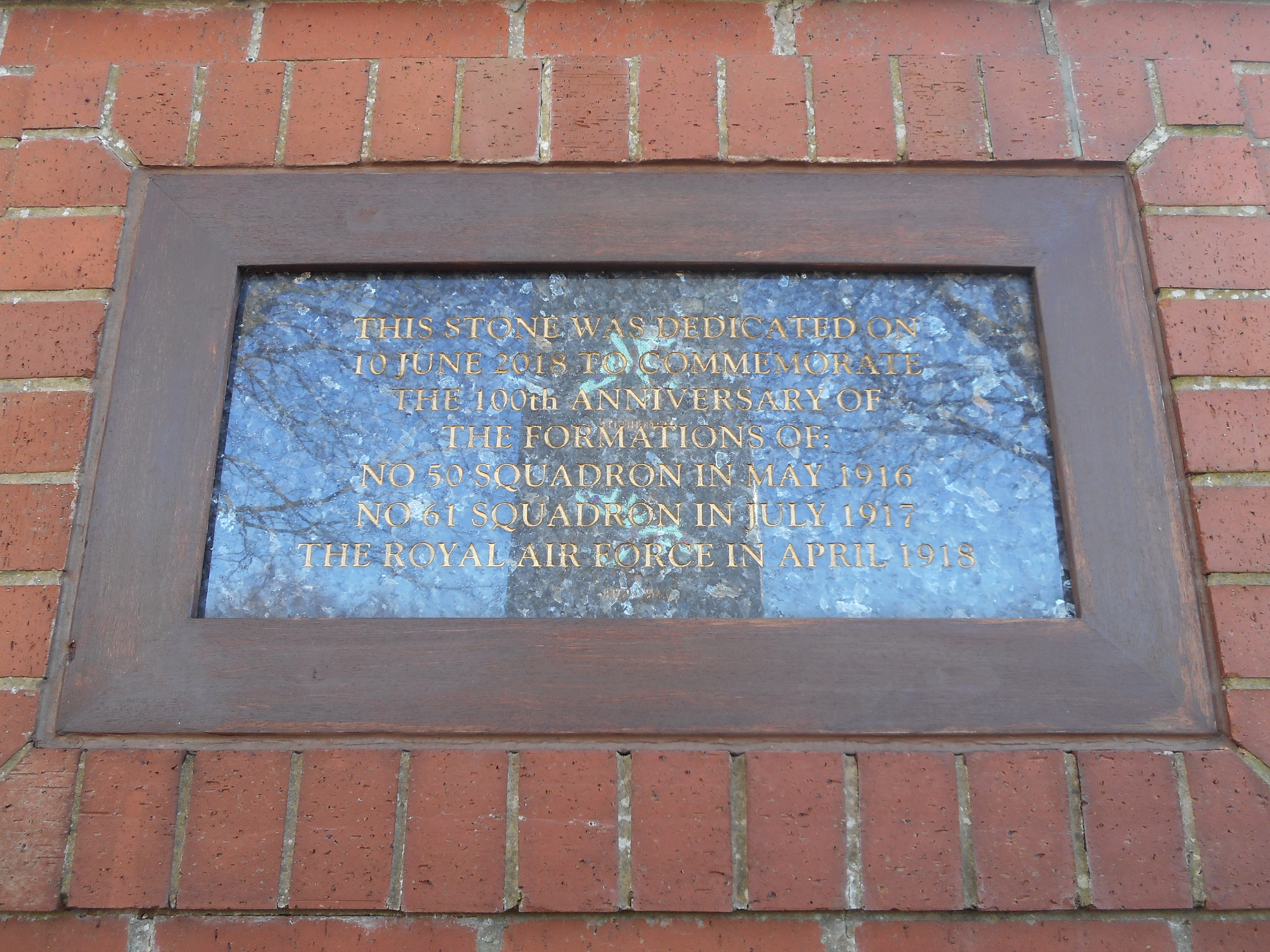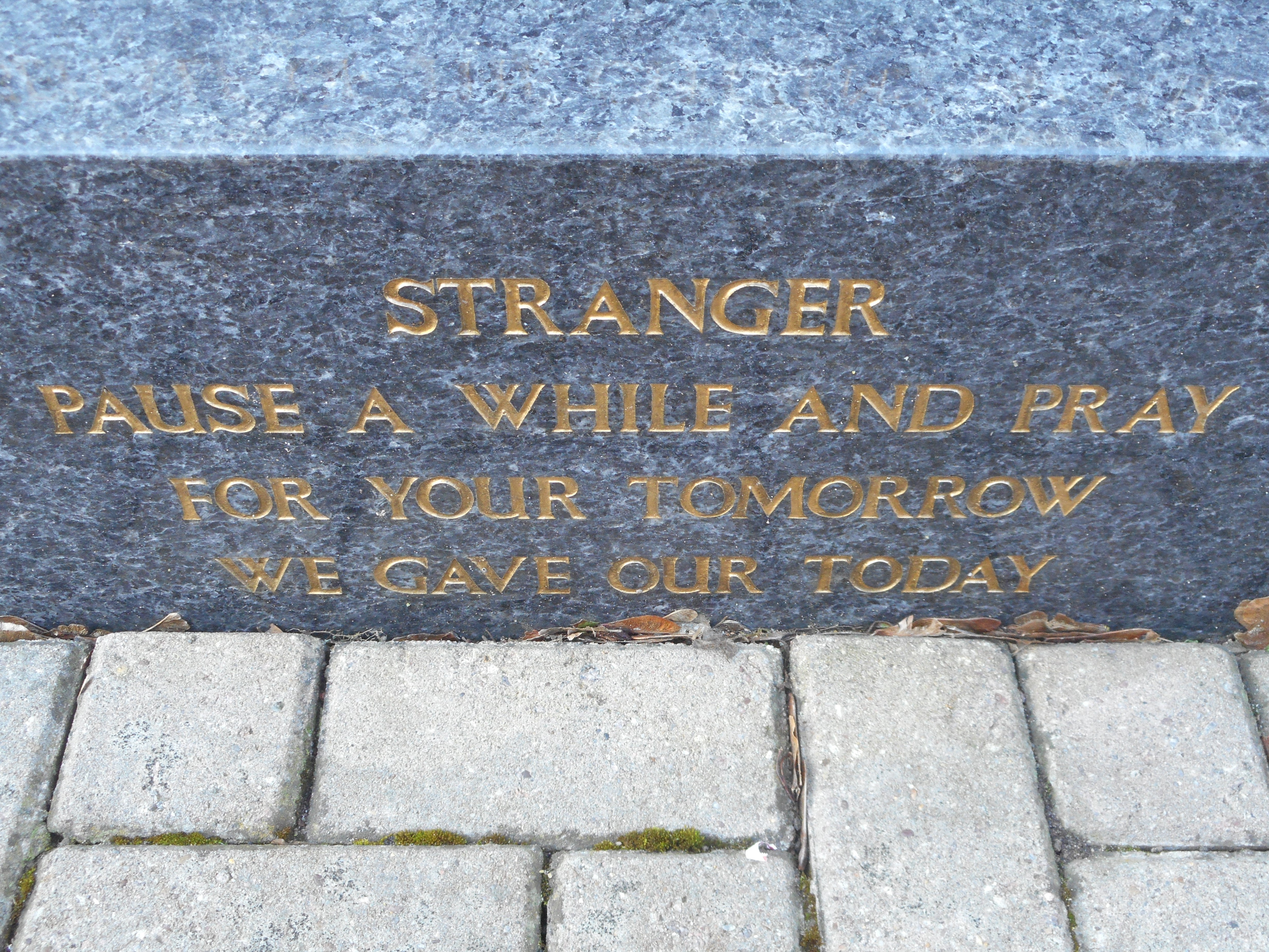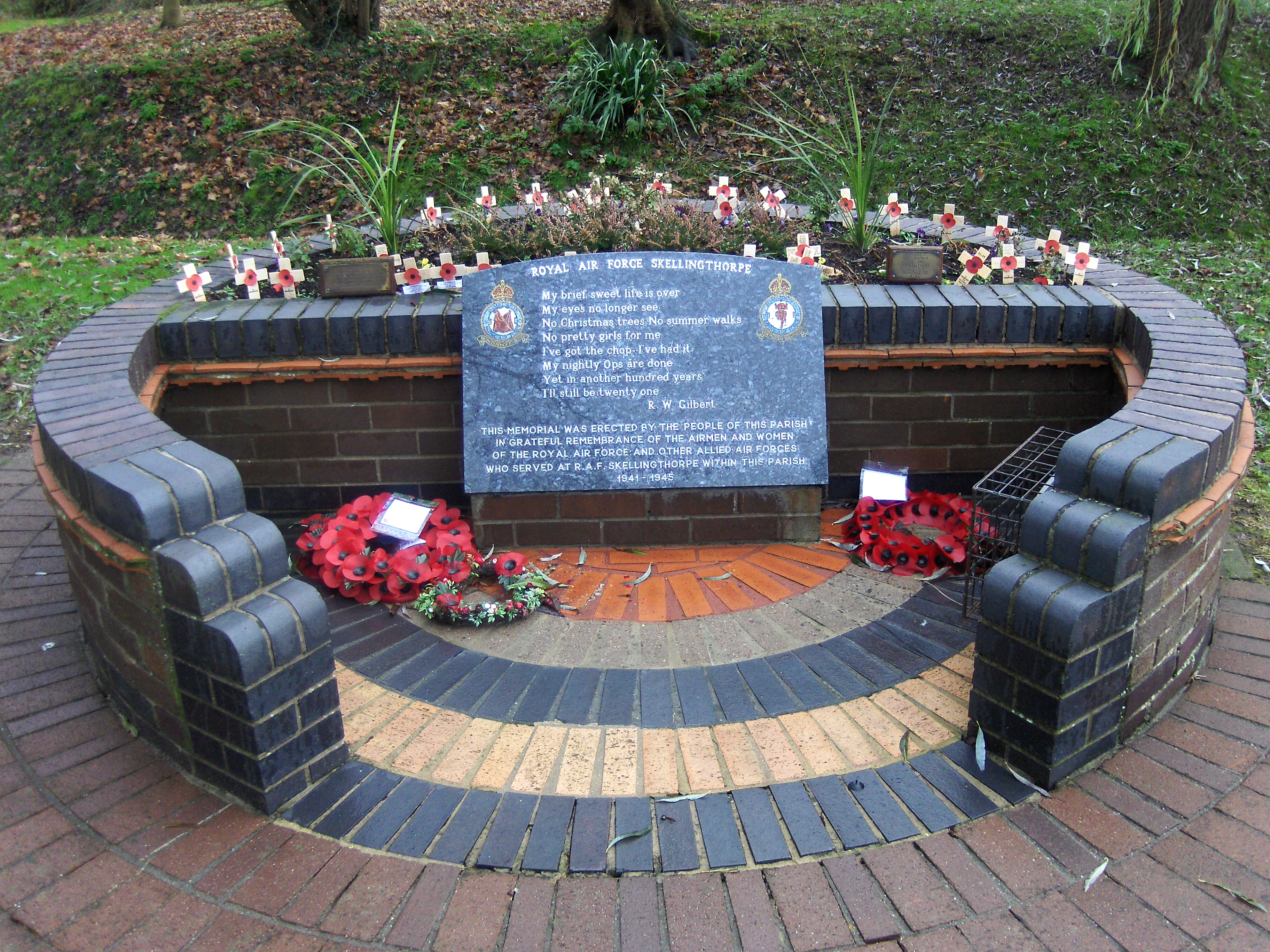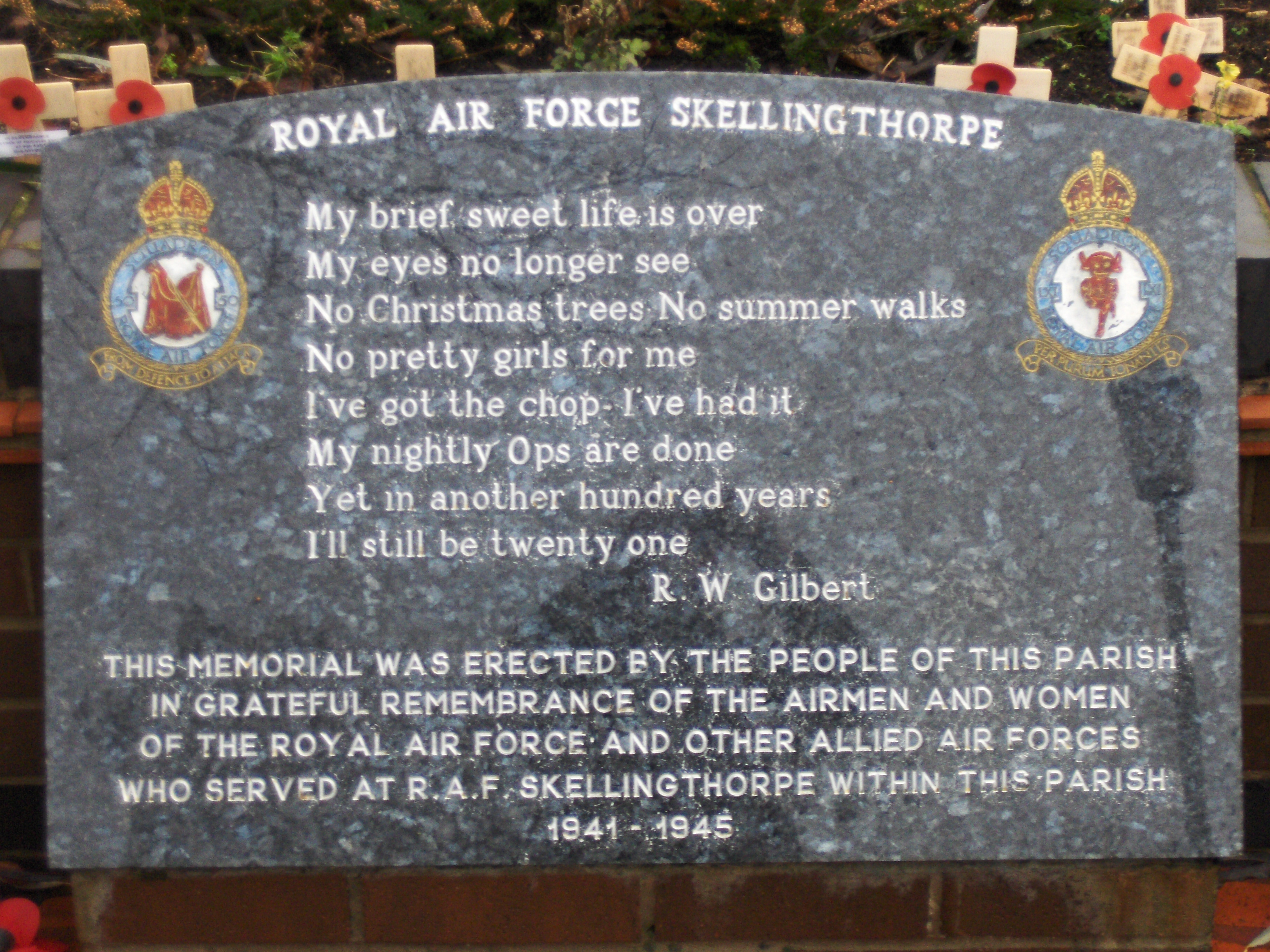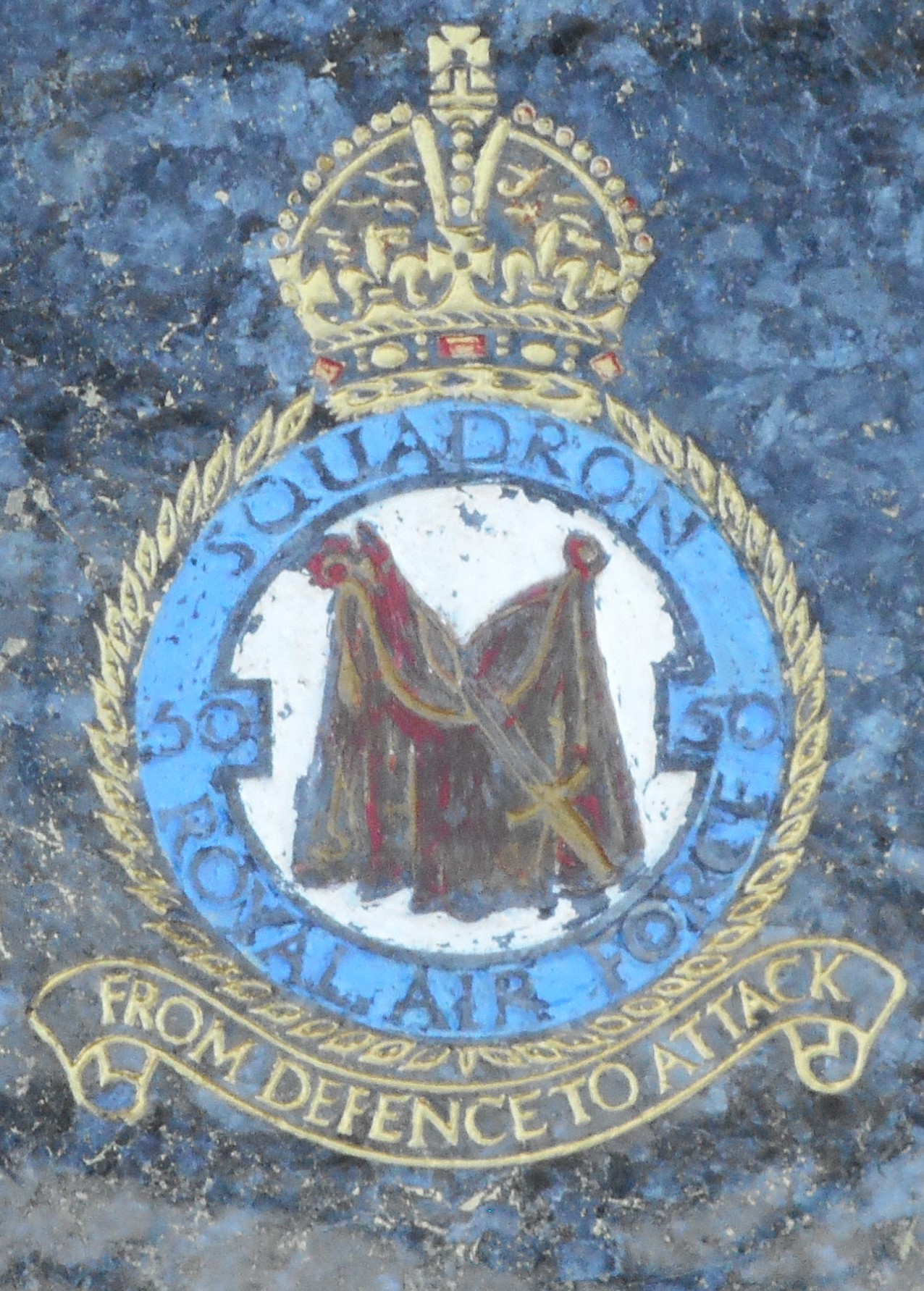Manser, Leslie Thomas
Personal Information
| Rank | F/O |
| Forename(s) | Leslie Thomas |
| Surname | Manser |
| Gender | M |
| Age | 20 |
| Decorations | VC |
| Date of Death | 31-05-1942 |
| Next of Kin | Son of Thomas James Stedman Manser and Rosaline Manser, of Radlett, Hertfordshire. |
Aircraft Information
| Aircraft | Avro Manchester I |
| Serial Number | L7301 |
| Markings | ZN-D |
Memorial Information
| Burial/Memorial Country | Belgium |
| Burial/Memorial Place | Heverlee War Cemetery |
| Grave Reference | 7. G. 1. |
| Epitaph | BELOVED SON OF T.J.S. AND R. MANSER, RADLETT, HERTS. ENGLAND. "HE DIED TO DO HIS DUTY" |
IBCC Memorial Information
| Phase | 1 |
| Panel Number | 67 |
Enlistment Information
| Service Number | 66542 |
| Service | Royal Air Force Volunteer Reserve |
| Group | 5 |
| Squadron | 50 |
| Trade | Pilot |
| Country of Origin | United Kingdom |
Other Memorials
| Location | Christ Church & St. John's, Radlett, Hertfordshire |
| Country | United Kingdom |
| Memorial Type | Inscribed Metal Plaque |
| Memorial Text | in memory of Flying Officer Leslie Thomas Manser, V.C. 50th Squadron R.A.F. Killed in action on the 31st May 1942 during the first thousand bomber raid on Cologne aged 20 years. "He pressed on to his target overcoming great enemy opposition and gave his l |
| Location | Nature reserve De Zig, nr Schanshof, Weertersteenweg, Kinrooi, Limburg Province |
| Country | Belgium |
| Memorial Type | Propeller blade & stencilled information board |
| Memorial Text | De herinrichting van de vijvers van de Zig leverde een opmerkelijke vondst op een propellerblad van een Manchester L7301. Dit toestel stortte op 31 mei 1942 in Molenbeersel neer |
| Location | Birchwood Way, Birchwood Estate, Lincoln, Lincolnshire |
| Country | United Kingdom |
| Memorial Type | Brick Memorial & Inscribed Marble Obolisk |
| Memorial Text | To the memory of the Air Crews and Ground Staff who gave their lives whilst serving with No 50 Squadron and No 61 Squadron, 5 group, Bomber Command The Royal Air Force 2nd World War 1939 to 1945. No 50 Squadron "From defence to attack" Operated from Waddi |
| Location | Memorial Gardens, Skellingthorpe, Lincolnshire |
| Country | United Kingdom |
| Memorial Type | Brick Memorial with Inscribed Marble Stone |
| Memorial Text | Royal Air Force Skellingthorpe. My brief sweet life is over, My eyes no longer see, No Christmas Trees, No summer walks, No pretty girls for me, I've got the chop - I've had it, My nightly ops are done, Yet in another 100 years I'll still be twenty one. R |
Miscellaneous Information
| 50 Sqn aircraft on loan with some of its personnel to 106 Sqn |
| VC Citation (London Gazette 23rd October 1942): "Flying Officer Manser was captain and first pilot of a Manchester aircraft which took part in the mass raid on Cologne on the night of May 30th, 1942. As the aircraft was approaching its objective it was caught by searchlights and subjected to intense and accurate anti-aircraft fire. Flying Officer Manser held on his dangerous course and bombed the target successfully from a height of 7,000 feet. Then he set course for base. The Manchester had been damaged and was still under heavy fire. Flying Officer Manser took violent evasive action, turning and descending to under 1,000 feet. It was of no avail. The searchlights and flak followed him until the outskirts of the city were passed. The aircraft was hit repeatedly and the rear gunner was wounded. The front cabin filled with smoke, the port engine was over-heating badly. Pilot and crew could all have escaped safely by parachute. Nevertheless, Flying Officer Manser, disregarding the obvious hazards, persisted in his attempt to save aircraft and crew from falling into enemy hands. He took the aircraft up to 2,000 feet. Then the port engine burst into flames. It was ten minutes before the fire was mastered, but then the engine went out of action for good, part of one wing was burnt, and the air-speed of the aircraft became dangerously low. Despite all the efforts of pilot and crew, the Manchester began to lose height. At this critical moment, Flying Officer Manser once more disdained the alternative of parachuting to safety with his crew. Instead, with grim determination, he set a new course for the nearest base, accepting for himself the prospect of almost certain death in a firm resolve to carry on to the end. Soon, the aircraft became extremely difficult to handle and, when a crash was inevitable, Flying Officer Manser ordered the crew to bale [sic] out. A sergeant handed him a parachute but he waved it away, telling the non-commissioned officer to jump at once as he could only hold the aircraft steady for a few seconds more. While the crew were descending to safety they saw the aircraft, still carrying their gallant captain, plunge to earth and burst into flames. In pressing home his attack in the face of strong opposition, in striving, against heavy odds, to bring back his aircraft and crew and, finally, when in extreme peril, thinking only of the safety of his comrades, Flying Officer Manser displayed determination and valour of the highest order.” |
Commonwealth War Graves Commission
The National Archives
Last Operation Information
| Start Date | 30-05-1942 |
| End Date | 31-05-1942 |
| Takeoff Station | Skellingthorpe |
| Day/Night Raid | Night (99% moon) |
| Operation | Koln |
| Reason for Loss | Manser had decided to bomb from 7000ft rather than the briefed height of 12000ft much to the concern of his second pilot Leslie Baveystock. The bombing run went according to plan with Manser selecting a target area on the edge of the burning city, however they were picked out by searchlights and shortly after the release of the incendiaries they were hit by flak blasting off the rear of the bomb doors. Despite evasive manoeuvres they were again peppered by 20mm flak. At 200ft the port engine burst into flames which reached back as far as the tail, fortunately this died down without burning through the spar or setting fire to the fuel tanks. With the aircraft now on one engine and losing height excess weight was jettisoned. However the starboard engine could not take the strain, its temperature rose and the aircraft became increasingly difficult to control, at this point Manser gave the command to his crew to bail out. The last man to leave was Leslie Baveystock staying behind to assist. Manser finally lost control of the aircraft and it crashed into the ground killing him instantly. |
